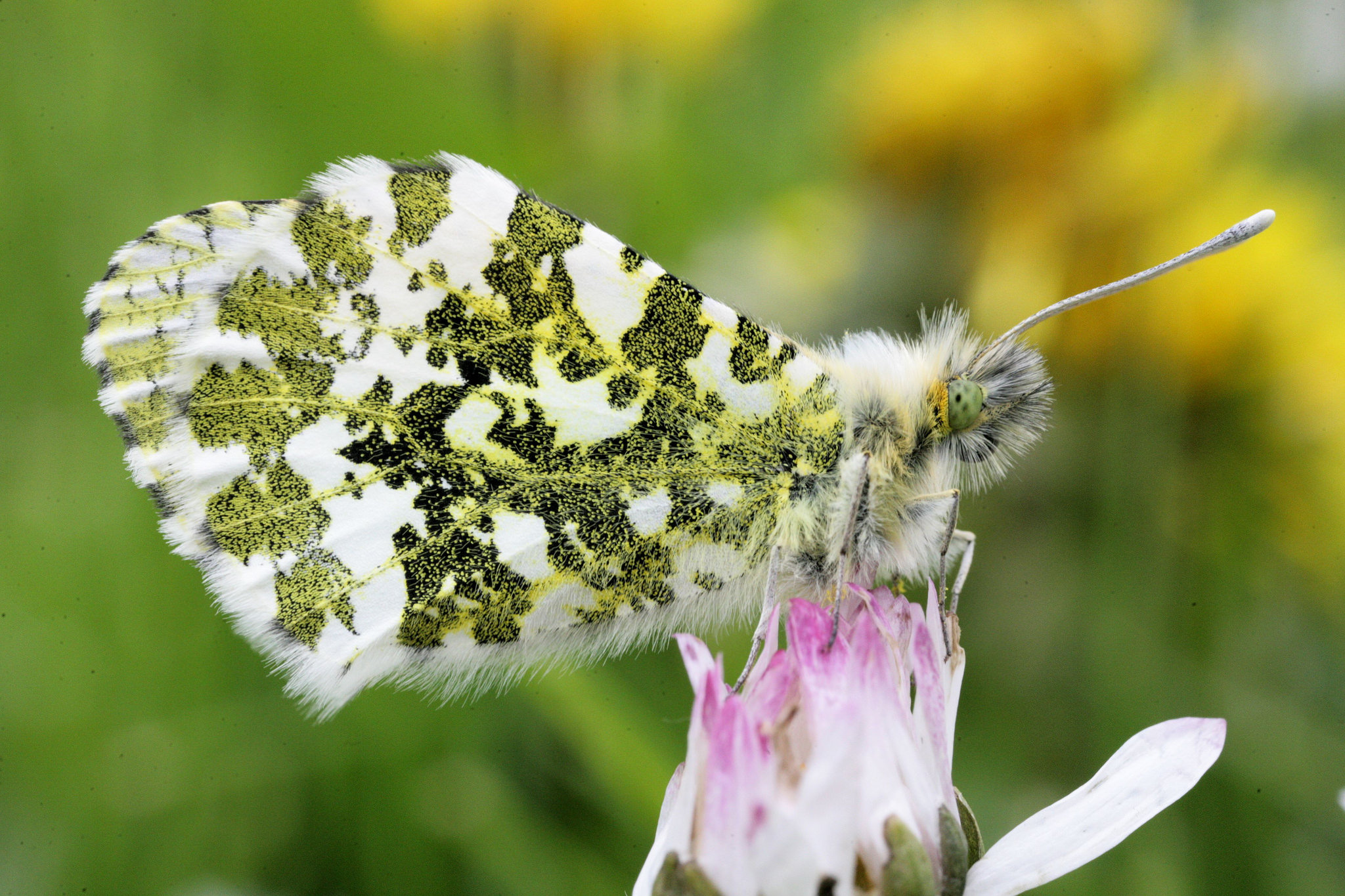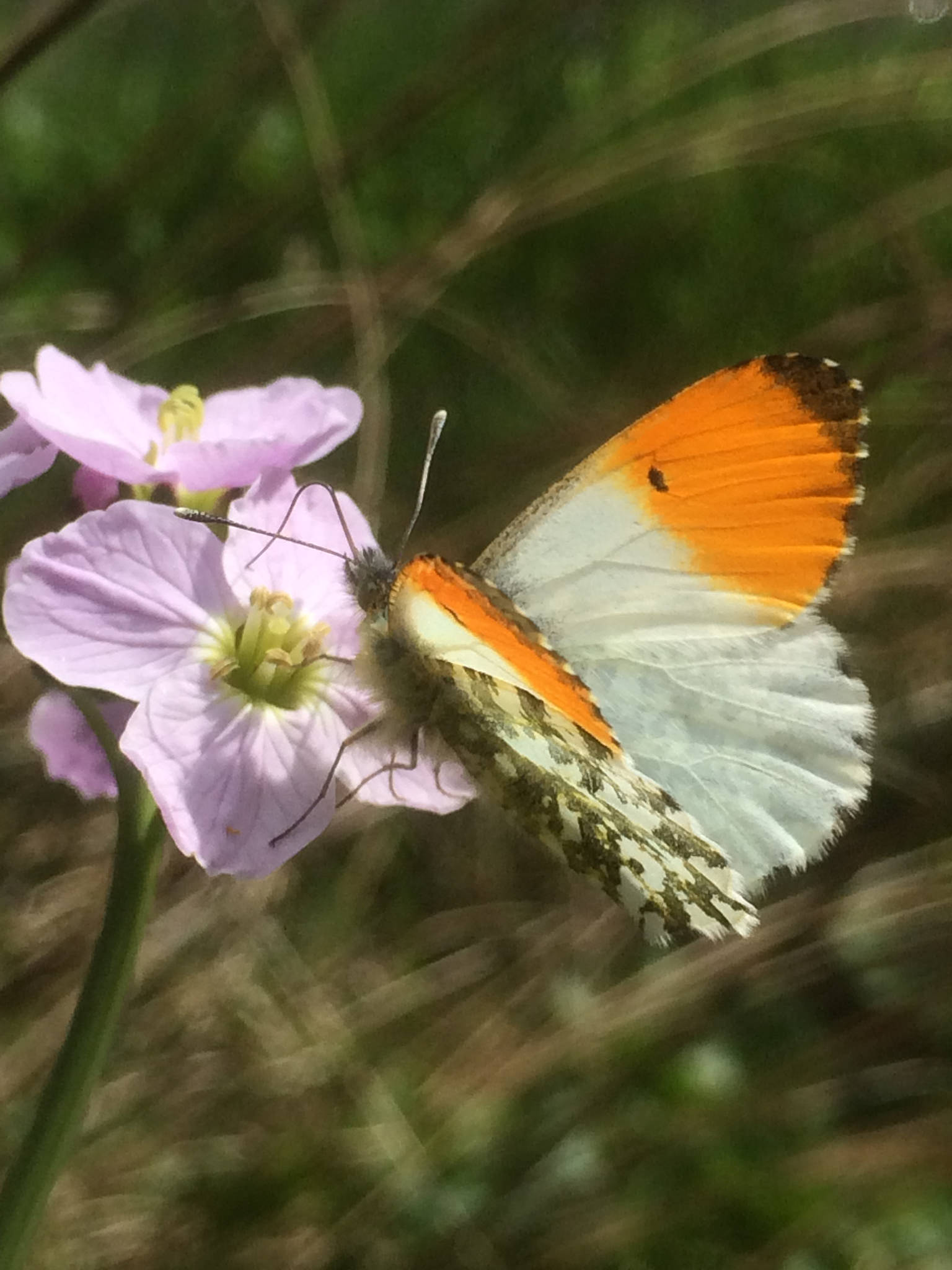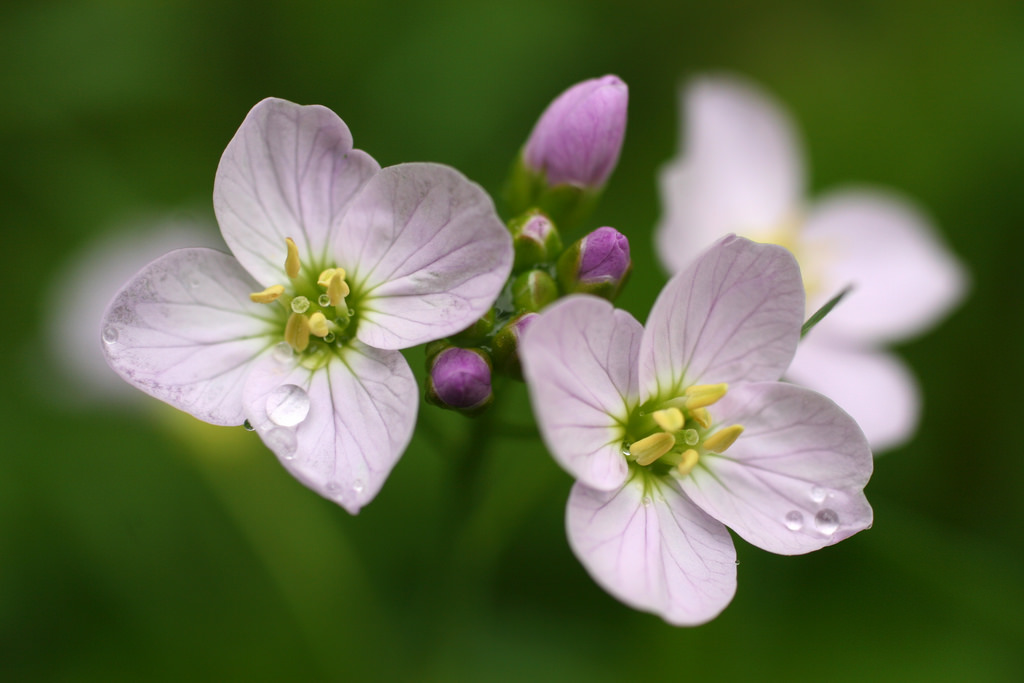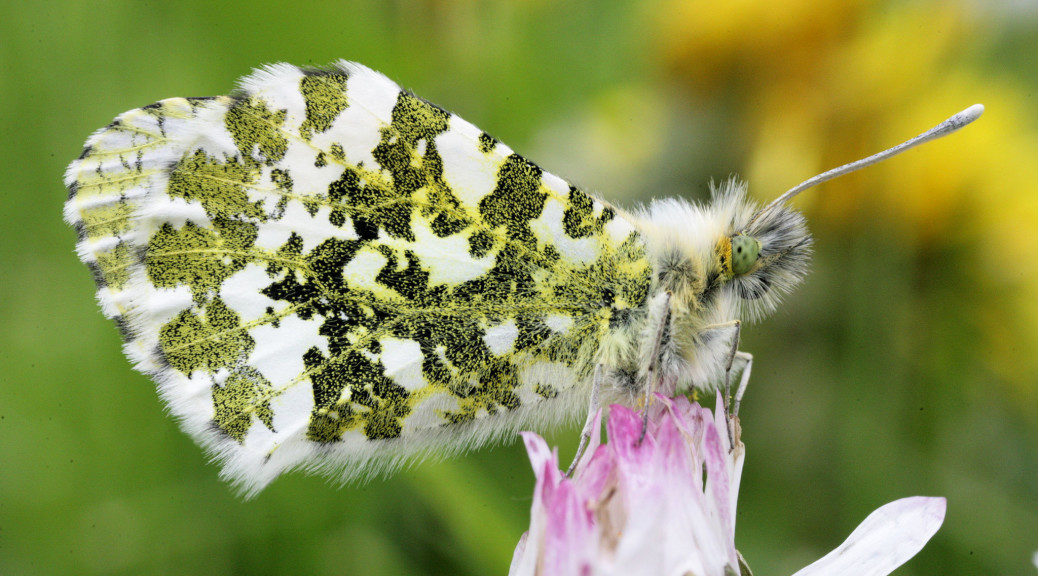
When we moved to Kilkenny 20 years ago, we bought a derelict house in Bramblestown, a large townland of prime agricultural land. The older generation referred to our house as being in Power’s Bog not Bramblestown, yet the map showed clearly that we lived in Bramblestown. This confused me for a time until I found out that this area was once a ‘bog’; not in the turf-cutters-destroying-raised-bog sense, but rather that the surrounding low-lying fields were at one time poorly drained. Once pointed out to me this history is perceptible, but only just. And one of its signs is the Cuckooflower, or Lady’s smock, that grows in a couple of the fields around us but not in the others. This is a flower of damp soil, and is one of the few residuals from a time long gone. It is a shame that the land here has been improved, but at least the Cuckooflower means that I have the pleasure of seeing plenty of orange-tip butterflies in spring, for Cuckooflower is its principal food plant. Females lay only a solitary egg on each plant, for laying two would be quite a waste as after emerging the young larvae will eat its own egg case, and any other eggs it finds, as it has cannibalistic tendencies.

The sexes of the orange-tip differ more than perhaps any other butterfly species in Ireland, for it is only the male that supports the trademark bright orange splotches on the wings. They also differ in behaviour as the males roam the fields and hedgerows looking for the more sedentary females that keep closer to their food plant. Some clever people suggest that this difference in roaming behaviour explains why it is only the male that needs the orange patch as a warning signal to potential predators that it is unpalatable as a result of mustard oils it accumulated in its body from the larval food plant.
The land drainage that Bramblestown, or Power’s Bog, has experienced over the decades is something that has happened the length and breadth of the country. Somewhere in the region of one third of the country (2,022,590 ha!) has been drained through government supported schemes since the 20th Century, making drainage the single most destructive force that has waged war on biodiversity in Ireland since the felling of our native woodlands. And this war continues, for everywhere, fields are still being drained and improved at a depressing frequency, not grant-aided on this occasion, but sacrificed for the relentless objective of increasing productivity in the name of progress. It is little wonder, therefore, that the orange-tip, a denizen of damp places, is one of three butterfly species suffering a steep population decline since 2008. Poor little blighters, what hope do they have against the might of the farming lobby!
Speckled wood #1, Dingy skipper #2, Wall brown #3, Common blue #4, Holly blue #5, Small blue #6, Meadow brown #7, Ringlet #8, Wood white #9, Cryptic wood white #10 & Orange-tip #11.


